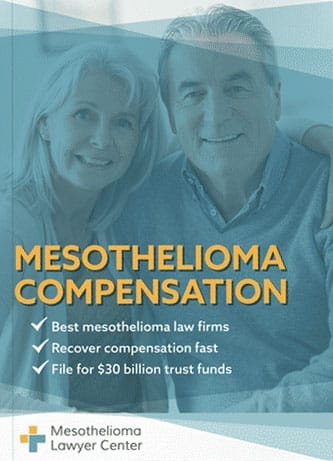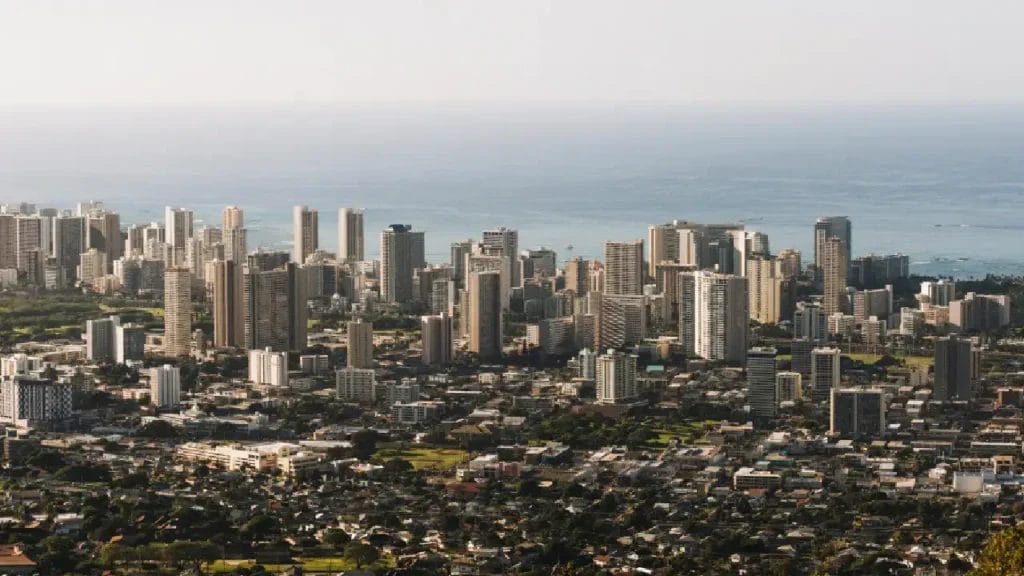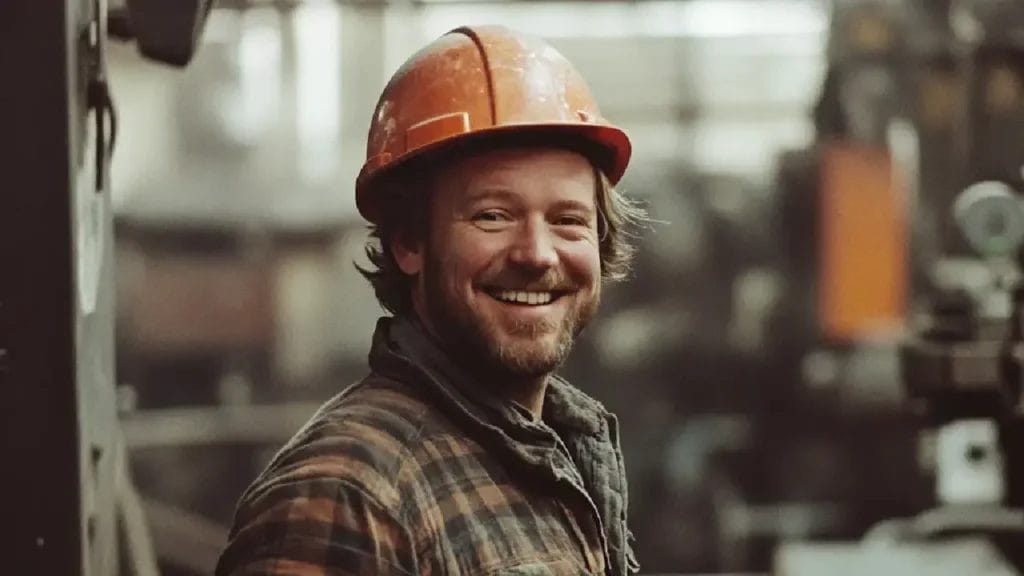Victims of asbestos exposure in Hawaii are fighting for justice with the assistance of qualified Honolulu mesothelioma lawyers. Many of the important industries in Honolulu used asbestos in the past and put residents and workers at risk of exposure and diseases like mesothelioma.
If you or a loved one have been diagnosed with mesothelioma, asbestos-related lung cancer, or asbestosis, you may be entitled to substantial compensation. Fill out our form to get a free Financial Compensation Packet. You’ll learn about the experienced mesothelioma lawyers in Honolulu, how to get paid in 90 days, how to file a claim for the asbestos trust funds, and more.


FREE Financial Compensation Packet
- Info on law firms that will recover your HIGHEST COMPENSATION
- Learn how to get paid in 90 days
- File for your share of $30 billion in trust funds
Honolulu Asbestos Facts
- With its smaller population and less industrialized economy, Hawaii has seen fewer asbestos-related deaths than other states.
- Honolulu has the highest number of asbestos deaths in the state, with over 500 between 1999 and 2017.
- U.S. Navy veterans were at particular risk of exposure to asbestos because it was used in so many ship materials and components.
- The Vermiculite of Hawaii plant also placed workers at risk in processing this asbestos-contaminated mineral.
Why Do I Need a Honolulu Mesothelioma Lawyer?
If you have mesothelioma, you need a local lawyer experienced in winning mesothelioma and asbestos cases. The number one reason people sue for mesothelioma is to recover damages. Mesothelioma is a costly illness. Legal action can help cover medical expenses, lost wages, and more.

A top-rated Hawaii mesothelioma attorney based in Honolulu, with the resources of a large firm, can help you in several ways:
- Speed Up the Process: Increase your chances of receiving compensation sooner.
- Explain Your Legal Options: Understand the pathways available for seeking the compensation you deserve.
- Review Your Case for Free: Benefit from a no-obligation case evaluation to explore your options.
- Investigate Your Past Asbestos Exposure: We delve deep into your history to pinpoint when and where exposure occurred.
- Determine Liability: Identify which companies are responsible for your asbestos exposure.
- Build a Strong Case: Collect evidence and proof to create a compelling argument against those accountable.
- Maximize Compensation: Ensure you receive the maximum compensation you are eligible for.
No matter where you reside in Hawaii—be it Hilo, Kailua, or Pearl City—our legal team is committed to offering personalized support. We understand the challenges you face and provide services tailored to your needs, including traveling to meet you if you cannot travel.
Our contingency fee structure means you pay no fees unless we secure compensation for you, eliminating financial risk. From day one, we stand by you, dedicated to achieving the justice and compensation you deserve. Reach out today to schedule your free consultation and take the first step toward peace of mind.
How the Law Firm Eliminates Financial Risk for Clients
When dealing with the aftermath of asbestos exposure, pursuing compensation shouldn’t add to your stress or financial burden. Here’s how our dedicated legal team shields you from financial risk:
- Free Initial Consultation: Wherever you reside across Hawaii, our legal experts offer a complimentary first meeting. This consultation helps us evaluate your situation and outline potential legal paths without any upfront cost.
- We Come to You: Travel limitations shouldn’t be an obstacle to seeking justice. If you’re unable to visit our office, rest assured, our attorney will meet with you at your convenience and location, making the process easy and accessible.
- Contingency Fee Arrangement: Our commitment to your case comes with zero financial pressure. We operate on a contingency fee basis, which means we only collect a fee if we successfully secure compensation for you. This approach aligns your interests with ours and guarantees that you’ll never face a legal bill unless we win your case.
- Comprehensive Risk Evaluation: Before taking any legal action, we assess the potential for success thoroughly. By doing so, we ensure that all avenues are considered, giving you a clear understanding of your standing and chances for compensation without any financial commitment.
Our approach makes it easier for you to focus on your health and recovery, knowing that you have nothing to lose and much to gain. Reach out today, and let us help turn your hardship into rightful justice—without the burden of financial risk.
Where Was I Exposed to Asbestos in Honolulu?
Mesothelioma is almost always caused by negligent exposure to asbestos in the workplace. In Hawaii, residents frequently encounter asbestos-containing materials in daily life, particularly because these materials were historically used in various construction elements like insulation and floor tiles. The risk arises primarily when these materials are disturbed. When asbestos is disrupted, fibers can become airborne and potentially lodge in the lining of the lungs or abdomen, posing serious health risks.
Some of the industries and workplaces that most heavily used asbestos in Honolulu and elsewhere include:
- Construction
- Manufacturing
- Mineral processing
- Military bases
- Shipbuilding and shipyards
- Agriculture
- Power plants
Honolulu is home to many businesses in these and other industries that used asbestos in the past. If you aren’t sure where you encountered asbestos, a local mesothelioma attorney can help. Understanding both the historical context and the specific conditions under which asbestos becomes dangerous is crucial for residents seeking to protect themselves and their families.
How Does Asbestos Exposure Occur at Oil Refineries in Hawaii?
Asbestos exposure in Hawaii’s oil refineries primarily arises from the extensive use of asbestos-containing materials in these facilities, particularly for their fireproofing and insulating capabilities.
Key Areas of Concern:
- Insulation and Fireproofing:
Asbestos was commonly used for insulation on pipes, boilers, and other high-temperature equipment. This was done to prevent overheating, which is a critical concern in the refinery process. - Construction and Maintenance Activities:
During construction, renovation, or routine maintenance, workers can inadvertently disturb asbestos fibers embedded in structures. This can happen when cutting, drilling, or demolishing old equipment, releasing dangerous fibers into the air. - Aging Equipment:
As time passes, the asbestos in insulation and other materials can become friable, meaning the fibers break down and become airborne more easily, posing a risk to workers who are unaware or unprotected. - Lack of Proper Safety Measures:
Without adequate safety protocols and personal protective equipment, workers are at a higher risk of inhaling asbestos fibers. Ensuring proper training and protective gear is crucial in mitigating this risk.
In summary, the threat of asbestos exposure in Hawaii’s oil refineries largely results from disturbed asbestos fibers due to maintenance activities, aging installations, and insufficient safety practices. Understanding these risks is essential for safeguarding the health of refinery workers.
Power plants in Hawaii frequently utilized asbestos because of its excellent thermal resistance and fireproof qualities. These attributes were invaluable in environments where controlling heat was critical. Unfortunately, it later became evident that asbestos exposure could lead to serious health risks, including several forms of cancer.
Where Asbestos Might Still Be Found
Despite the known dangers, asbestos continues to exist in certain aging equipment. Notable examples include:
- Boilers: Used extensively in power plants for steam generation, often insulated with asbestos for its heat-retentive properties.
- Tanks: Storage tanks, especially those containing hot liquids, were lined with asbestos to prevent heat loss.
- Turbines: As key components requiring heat resistance, turbines often contained asbestos-containing materials.
This continued presence emphasizes the need for diligent inspections and handling precautions in older facilities.
Pearl Harbor Naval Shipyard
The Pearl Harbor Naval Shipyard, one of the most famous shipyards in the United States, currently employs thousands of people. It has been years since heavy asbestos use at the Pearl Harbor shipyard, but current workers could still be exposed during remediation efforts.
The Pearl Harbor shipyard is home to a Superfund cleanup site designated by the Environmental Protection Agency (EPA).
Asbestos at Pearl Harbor was used in:
- Buildings
- Stall lots
- Dry dock stations
- Pipes
- Ship parts
- Incinerators
- Boilers
- Valves and gaskets
- Plumbing and electrical insulation
- Steam lines
- Turbines
- Electronics
- Deck materials
From the 1940s until the 1970s, asbestos was used so heavily at the shipyard that numerous former workers passed away from diseases caused by asbestos exposure. Other workers are currently living with malignant mesothelioma and other asbestos-related illnesses.
Historically, shipyard workers in Hawaii, particularly at locations such as the Pearl Harbor Shipyard on the island of Oahu, faced significant asbestos exposure. This was because asbestos was commonly used as insulation in ships and was incorporated into various pieces of machinery, including boilers, gaskets, and pumps. The material’s prevalence in these critical components created an environment where workers were continuously at risk.
The extensive use of asbestos in such settings contributed to a legacy of health issues that continue to affect workers today. Asbestos exposure has left a lasting impact, with many individuals suffering the severe consequences of working in these hazardous conditions.
Vermiculite of Hawaii Plant
According to the Agency for Toxic Substances and Disease Registry (ATSDR), from 1953 until 1983, Honolulu’s Vermiculite of Hawaii Plant received hundreds of shipments of asbestos-contaminated vermiculite. The plant was an exfoliation site, a type of processing that puts workers at particular risk of asbestos exposure.

Even after asbestos use was discontinued at the plant, fibers were present decades later, until around 2001, when the Environmental Protection Agency (EPA) performed a cleanup at the site. Both workers and nearby residents were put at risk because of the activities of the plant.
Asbestos Alerts in Schools
Around 2005, residents learned that Honolulu and other area schools posed asbestos exposure risks to students and staff. The risk was high enough that the EPA got involved and reminded the state of the potential hazards.
In 1986, Congress passed the Asbestos Hazard Emergency Response Act (AHERA), which mandates that all public and private schools in the United States must develop, plan, and carry out asbestos safety plans, including routine inspections and maintenance.
Unfortunately, employees in one Hawaii school, King Intermediate School, didn’t properly dispose of asbestos after an exterior paint job. This led to concerns that the Hawaii Department of Education had not followed AHERA as required.
Honolulu Fire Department Cited for Poor Asbestos Practice
Hawaii has strict rules for asbestos abatement, so it shocked many Honolulu residents when the Honolulu Fire Department violated asbestos safety standards.
Firefighters failed to take appropriate steps to reduce exposure during a 2017 fire at the Marco Polo highrise building.
“Only one company bagged their turn-out gear and equipment at the scene and the rest of the companies did not do so until they returned to their stations. Some fire fighters did not bag their contaminated turn-out gear until the end of their shift i.e. next morning. As a result, the fire trucks and/or the fire stations may be contaminated with asbestos and/or other hazardous materials.”
Hawaii Occupational Safety and Health Division
The mistake not only put firefighters and the public at risk but also came with steep fines.
Additional Sites Associated with Asbestos in Honolulu
Many buildings and structures constructed with asbestos-containing materials (ACMs) in Hawaii remain today.
Mills and Plants
- Honolulu Planing Mill
- Kate Power Plant
- Kohala Sugar Mill
- Pioneer Mill Company
Buildings
- Alexander Young Building
- Alexander & Baldwin Building
- Honolulu Hale
- Honolulu Museum of Art
- City of Honolulu Building
- Marco Polo Highrise
Schools
- King Intermediate School
- Haleiwa Elementary School
- Aliamanu Middle School
- Aiea Elementary School
- Farrington High School
- University of Hawaii, Moore Hall
Other Job Sites, Buildings, and Businesses
- Aloha State Sales
- Dole Food Co./ HI Top Fruits
- Ewa Plantation Co.
- Hawaii Gas
- Honolulu Iron Works
- Hawaiian Pineapple Co.
- Schofield Barracks
- Von Hamm Young Company
- La Haina Plantation
- Ford Isle Tower
- Hawaiian Tuna Packers
- Queens Medical Center
Locations in Hawaii Where Clients Have Received Assistance with Mesothelioma Cases
Throughout Hawaii, individuals affected by mesothelioma have received dedicated legal support to secure the compensation they deserve. The assistance has spanned a variety of locations, including:
- Hilo: Nestled on the Big Island, clients from here have been guided through complex legal processes.
- Honolulu: As the bustling capital city, numerous residents have benefitted from comprehensive legal aid.
- Kailua: Known for its beautiful beaches, clients in this charming town have also found support.
- Kahului: On the island of Maui, individuals here have navigated claims with specialized assistance.
- Kaneohe: Located on Oahu’s eastern shore, clients have sought and received help for their cases.
- Pearl City: In this central location on Oahu, many have managed to secure rightful compensation.
- Waipahu: This historic plantation town has also seen residents successfully pursue claims.
Whether on the mainland or the islands, residents across different Hawaiian locales have found necessary support in their fight against mesothelioma.
Assistance for Veterans with Mesothelioma in Hawaii
The veteran population has high rates of mesothelioma because the military used asbestos heavily. U.S. Navy veterans are most affected by mesothelioma because ships contained asbestos in most components.

If you are a veteran with mesothelioma, a lawyer can help. They can determine if you are eligible to file a lawsuit against companies that supplied the military with asbestos. They can also find any asbestos trusts you qualify for.
As a veteran, you are also entitled to VA benefits. A lawyer can help you make a claim and navigate the complicated system. The VA rates mesothelioma 100% disabling, so you are probably entitled to significant monthly compensation.
Honolulu is home to the Spark M. Matsunaga Department of Veterans Affairs Medical Center. You can receive free healthcare here.
-Jingjing Z.
People in this company are friendly, knowledgeable, and professional. They quickly answered all my questions and patiently walked me through the case and any open issues. I so appreciate their diligence and patience during this challenging time.
Mesothelioma Treatment in Honolulu
If you or a loved one suffer from mesothelioma, asbestosis, or any other asbestos-related diseases, two cancer centers in Hawaii provide innovative and comprehensive treatment options.
Cancer Research Center of Hawaii
651 Ilalo Street, BSB 231
Honolulu, HI 96813
The University of Hawaii Cancer Center
701 Ilalo Street
Honolulu, HI 96813
Distance: 1.8 miles
Getting Legal Assistance in Honolulu
If you’ve been diagnosed with mesothelioma, asbestos-related lung cancer, or asbestosis, you may be entitled to compensatory damages. Get our free Financial Compensation Packet for information on the top mesothelioma and asbestos lawyers in your area. If you have questions or need assistance, contact us toll-free at 800-793-4540.

Paul Danziger
Reviewer and EditorPaul Danziger grew up in Houston, Texas and earned a law degree from Northwestern University School of Law in Chicago. For over 25 years years he has focused on representing mesothelioma cancer victims and others hurt by asbestos exposure. Paul and his law firm have represented thousands of people diagnosed with mesothelioma, asbestosis, and lung cancer, recovering significant compensation for injured clients. Every client is extremely important to Paul and he will take every call from clients who want to speak with him. Paul and his law firm handle mesothelioma cases throughout the United States.
References
- Naval Sea Systems Command. (n.d.). Pearl Harbor Naval Shipyard & IMF.
Retrieved from: http://www.navsea.navy.mil/shipyards/pearl/default.aspx - U.S. Environmental Protection Agency. (n.d.). Superfund Site: Pearl Harbor Naval Complex Pearl Harbor, HI.
Retrieved from: https://cumulis.epa.gov/supercpad/CurSites/csitinfo.cfm?id=0904481&msspp=med - Agency for Toxic Substances and Disease Registry. (2005, September 22). Health Consultation. Former Vermiculte of Hawaii Site.
Retrieved from: http://www.atsdr.cdc.gov/HAC/pha/FormerVermiculiteofHawaiiSite/HonoluluHCFinal092205.pdf - Hawaii State Department of Health. (2006, August). Asbestos in Residential Buildings.
Retrieved from: http://health.hawaii.gov/irhb/files/2013/07/asbresinfo.pdf - Adamski, M. (2004, December). Teachers Win Grievance. Honolulu Star-Bulletin.
Retrieved from: http://archives.starbulletin.com/2005/07/26/news/story7.html - Martin, D. (2005, June 26). More School Asbestos Found. Honolulu Star-Bulletin.
Retrieved from: http://archives.starbulletin.com/2005/06/25/news/index5.html - Environnmental Working Group. (n.d.). Asbestos-Related Deaths in Hawaii.
Retrieved from: http://www.asbestosnation.org/facts/asbestos-deaths/hi/ - Devera, J. (2017, September 30). HFD Fined for Asbestos-Related Violations During Marco Polo Fire Response. Hawaii News Now.
Retrieved from: https://www.hawaiinewsnow.com/story/36492623/hfd-fined-for-potential-asbestos-exposure-during-marco-polo-fire-response/ - Ordonio, C. (2019, June 7). Asbestos Warning Labels at Moore Hall Raise Concern. Ka Leo O Hawai’i.
Retrieved from: http://www.manoanow.org/kaleo/news/asbestos-warning-labels-at-moore-hall-raise-concern/article_47864d6e-87fe-11e9-8491-3bfd5ada50c5.html
